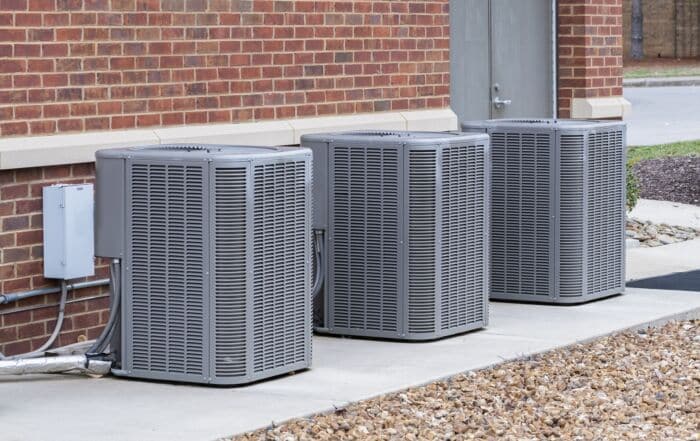Understanding SEER
Many homeowners may not understand what SEER stands for or how it's calculated, but they know that it is regulated by the government and affects a system's efficiency. SEER stands for Seasonal Energy Efficiency Ratio and is a measure of central air conditioning systems' energy performance. The value is determined by testing standards set by the U.S. Department of Energy (DOE). In 2016, the DOE developed an updated version known as SEER2 that will replace the existing standard in 2023. This new protocol uses similar criteria to rate efficiency.
SEER, or Seasonal Energy Efficiency Ratio, is a standard measure of efficiency for central air conditioning systems. It is derived from the ratio of total cooling capacity during normal operation divided by the total electric energy input over that same period—represented by an equation that divides BTUs (British Thermal Units) by watt-hours. The higher SEER rating, the less electricity required for a central A/C unit to do its job. The U.S. Department of Energy (DOE) has established minimum energy conservation standards:
- North: 13 SEER
- South: 14 SEER
Most manufacturers design their central A/C systems to operate at or above these standards. If a system achieves a SEER rating of 14 or more, it may qualify for ENERGY STAR® certification—which recognizes units with superior efficiency based on current rating systems.
SEER2 Differences
SEER2 differs from SEER in the testing conditions used to rate the system. Specifically, DOE increased the total external static pressure (TESP) used in the test to better reflect field conditions. For instance, with SEER2, TESP must be at least 0.50 inches of water column in. (wc.), whereas with SEER it was typically only 0.10 in. wc., which does not accurately reflect what a typical ducted system may experience in real-world applications. This change makes for a more accurate rating system that better predicts performance in actual homes and buildings.
What to Expect
Expect SEER2 ratings to be a bit lower than SEER ratings for most systems. For example, a central A/C unit with a SEER rating of 17 would likely have a SEER2 rating of around 16.5.
Energy conservation standards will also adjust to reflect the new SEER2 requirements. The proposed amendments from the Department of Energy (DOE) suggest the minimum 13 SEER for central A/C units in northern territories should become 14, and the south's 14 should become 15 in terms of SEER2. Specifically, this means:
- Central AC units with cooling capacities under 45,000 British Thermal Units per hour (BTUs/h) must have at least 13.4 SEER2 in the north and 14.3 in the south.
- Other types of units or product classes with different cooling capacity requirements may vary slightly from these standards.
In addition, current labels on central A/C systems that show their compliance with energy conservation standards will change beginning in 2023 to reflect their system’s SEER2 rating instead. This makes it easier for consumers to compare different models' efficiency information and make informed decisions when buying an air conditioning unit.
In Summary
SEER2 is a testing protocol designed to address the shortcomings of its predecessor, SEER. It more accurately reflects what consumers will experience in the field and provides them with a clearer understanding of unit efficiency. Additionally, it may lead to an upward shift in industry standards for efficiency, which means manufacturers must adjust their technologies accordingly.
Related Posts
Exploring Ductless Air Conditioning Systems for Small Spaces
If you’re a homeowner tired of sweating through sweltering summers, a ductless air conditioning [...]
Signs Your Air Conditioning Unit Needs Professional Maintenance
Imagine coming home on a sweltering summer day only to find that your air [...]
Common Misconceptions About Air Conditioning Usage and Costs
Air conditioning units are a staple in many homes, especially during the hot summer [...]


